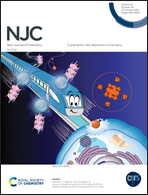Lipase/tannic acid magnetic hydrogel microspheres and their continuous catalytic application†
Abstract
The immobilization of an enzyme by covalent bonds usually involves the use of toxic chemicals. This action reduces the activity of the enzyme, but also is not conducive to application in food products. Herein, the surface of magnetic hydrogel microspheres was modified with tannic acid, which was oxidized into quinone, and then covalently linked to lipase through a Schiff base reaction. Using the water-absorption and water-retention characteristics of hydrogel microspheres, a micro-water/oil interface could be provided for lipase in the organic-phase reaction system, which provided favorable conditions for opening the α-helix “lid” of the active center of lipase and exposing the active center. Meanwhile, esterification catalyzed by lipase at the oil/water interface was promoted. In comparison with free lipase, the produced lipase/tannic acid magnetic hydrogel microspheres (L-PTAM2) exhibited superior temperature and pH stability, and could sustain the activity of free lipase. After 20 consecutive cycles, L-PTAM2 maintained about 57% of its original activity and could be separated from the product rapidly. L-PTAM2 was used for continuous catalytic production of benzyl acetate, which proffered a yield of 82%.



 Please wait while we load your content...
Please wait while we load your content...